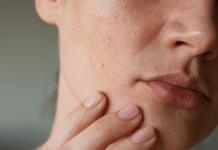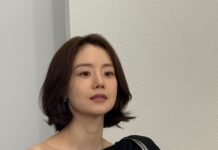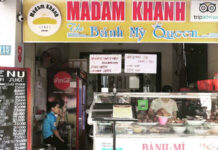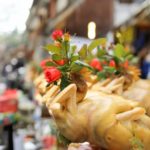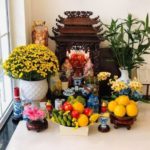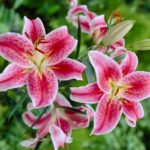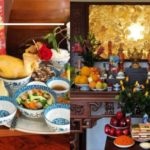For Buddhists, worship is of utmost importance, and specific feng shui rules govern the setup of a home Buddhist altar. Discover these rules with us in the article below!
1 Directions and Conditions for Setting Up a Buddhist Altar
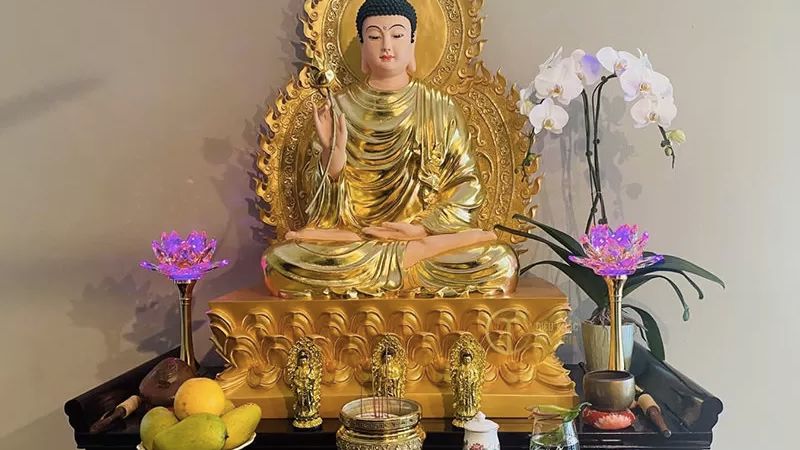 Directions and Conditions for Setting Up a Buddhist Altar
Directions and Conditions for Setting Up a Buddhist Altar
When setting up a home Buddhist altar, it is advisable to engage someone specialized in conducting consecration ceremonies for Buddhist statues and bodhisattvas. Additionally, selecting an auspicious day and aligning the altar with an appropriate direction are essential to ensure reverence and sanctity. The consecration ceremony and choice of day and direction signify caution and aspirations for blessings. However, from a Buddhist perspective, the Buddhas and bodhisattvas are omnipresent, and there is no place without them. All directions are imbued with the presence of the Buddhas, the Triple Gem, and the Naga Devas.
Devotees should approach the practice with sincerity and observe vegetarianism on the first and fifteenth days of the lunar calendar. It is also recommended to refrain from offering sticky rice with meat or animal meat as a form of worship. The ideal direction for the altar is one that faces the main entrance of the house, although there may be cases where the altar faces an inauspicious direction according to the homeowner’s birth details, serving to counterbalance that direction.
In the context of ancestor worship, it is not advisable to place the ancestral tablets higher than the Buddhist altar. This is based on the simple folk belief that the Buddhas have attained liberation and are Greatly Enlightened, and thus should not be positioned lower than sentient beings. While it is true that sentient beings are also Buddhas who have not yet awakened, this practice is intended to show respect to the Buddhas.
2 Preparing Offerings for the Buddha
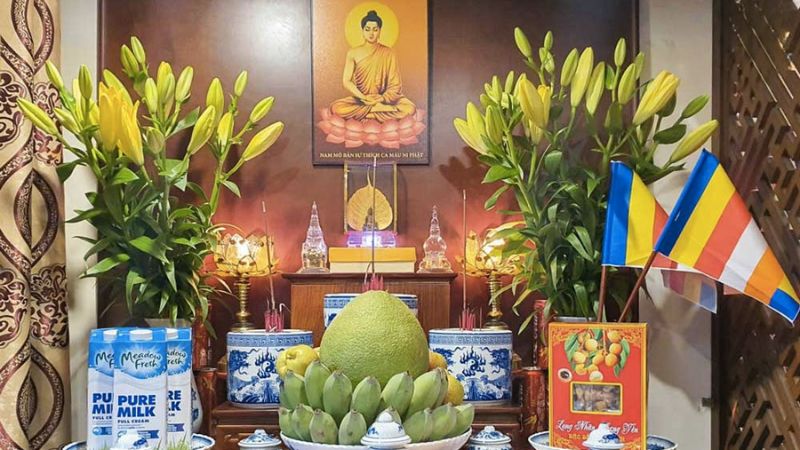 Preparing Offerings for the Buddha
Preparing Offerings for the Buddha
When preparing offerings for the Buddhist altar, keep in mind the following points:
- Vegetarian offerings: This includes incense, fresh flowers, ripe fruit, sticky rice cakes, and especially avoiding meat offerings such as animal meat. Additionally, refrain from offering fake paper money and hell bank notes on the Buddhist altar.
- Fresh flowers for the Buddha: Fresh flowers should be of varieties such as lotus, water lily, peony, and crape jasmine, avoiding wildflowers.
- Perishable items like flowers, incense, and drinking water should be changed daily. Edible offerings that are still consumable can be used for other purposes or given to family members; do not discard them. Dispose of spoiled or rotten items as you would regular garbage. There are no restrictions on the quantity of offerings, and they can be presented singly or in pairs.
- Before offering incense and performing rituals for the Buddha, maintain a vegetarian diet and abstain from meat, as well as engage in virtuous activities in your daily life.
3 Incense Offered to the Buddha
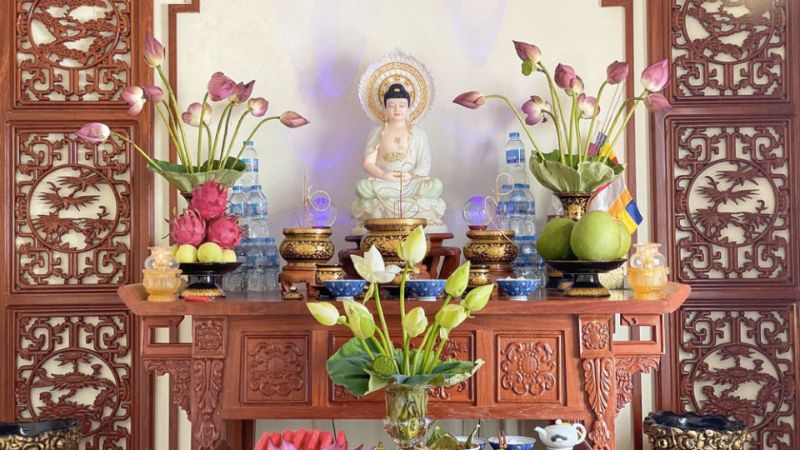 Incense Offered to the Buddha
Incense Offered to the Buddha
Incense: In Buddhism, incense is one of the six offerings used during meal offerings. However, when making offerings to the Buddha, there is no need for extravagant meat or fish dishes. Instead, fragrant incense, fresh flowers, ripe fruit, lit lamps, and clean water are sufficient.
Significance of Odd Numbers: When burning incense, Vietnamese people typically choose odd numbers such as 3, 5, 7, or 9. Odd numbers hold spiritual significance in Buddhism, such as the Triple Gem, the Three Realms, the Three Times, and the Threefold Training free from defilements.
Meaning of Incense Offerings: Incense offerings are not just physical objects but also hold profound symbolism. When the incense burns out, it symbolizes the end of a person’s life and serves as a reminder to not let time pass by idly.
Ideal Practice Times: The ideal times for home practice are early morning and evening. During these times, the mind is often calmer and more relaxed, allowing for better focus and more dedicated practice.
Respecting Other Faiths: After taking refuge in the Triple Gem in Buddhism, one should not take refuge in or worship other religions. However, it is essential to maintain a respectful attitude towards other faiths.
4 Placement of the Avalokitesvara Bodhisattva Statue
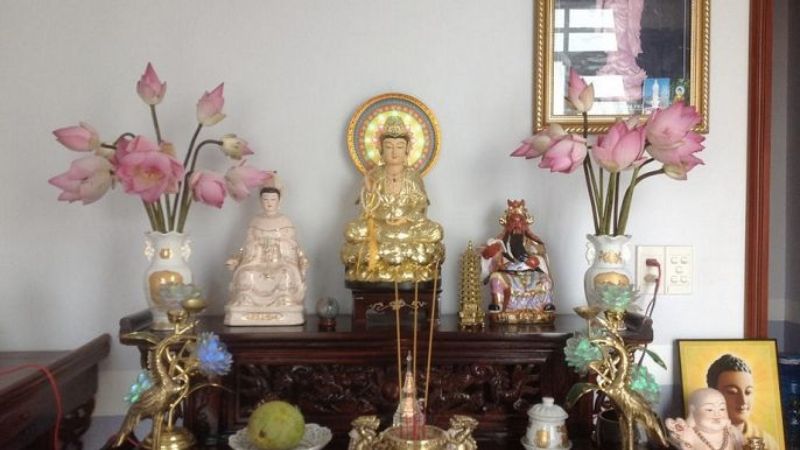 Placement of the Avalokitesvara Bodhisattva Statue
Placement of the Avalokitesvara Bodhisattva Statue
It is advisable to place the Avalokitesvara Bodhisattva statue alongside other bodhisattva statues on either side, with deity statues placed on the outside. Additionally, avoid placing the Avalokitesvara Bodhisattva statue in the direction of the toilet, bedroom door, or dining table. This practice demonstrates respect for the significance and position of the Avalokitesvara Bodhisattva. It is imperative to adhere to the principles and advice of Buddhism when placing and using Buddhist statues and other sacred objects.
5 Placement of the Buddha Statue
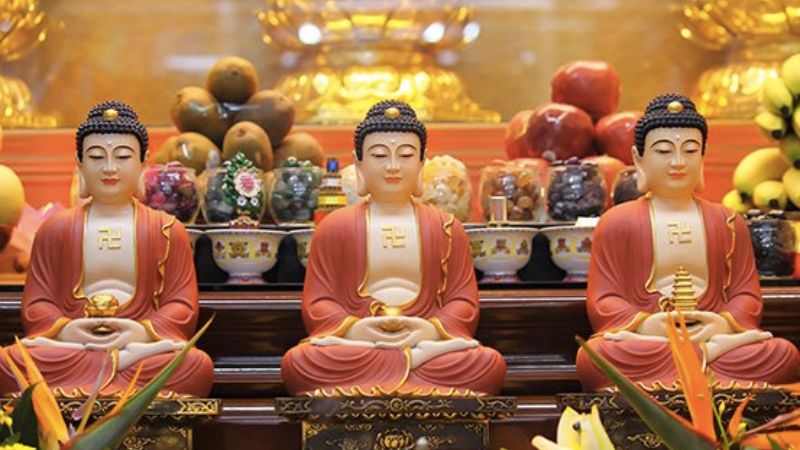 Placement of the Buddha Statue
Placement of the Buddha Statue
There are certain rules to follow when setting up a home Buddhist altar:
- Do not treat the Buddha statue as an antique or a treasure; instead, handle and store it with care to ensure the family’s peace and safety.
- Avoid placing the Buddha statue in the bedroom or any disrespectful location. Ideally, provide a separate, quiet, and airy room for the Buddhist altar. If a separate room is unavailable, cover the Buddha statue with a cloth and only uncover it when making offerings.
- There is no need to purchase numerous Buddha statues for the home; one statue or a Buddha image is sufficient, coupled with sincere daily prayers.
- Old and damaged Buddha statues should be repainted, cleaned, and bathed in scented water on the first and fifteenth days of the lunar calendar. If the statue is severely damaged, seek the assistance of monks, and do not discard it casually.
- Do not roll up or place Buddhist paintings under chairs or sit on them.
We hope that these notes will provide homeowners with valuable information when setting up a home Buddhist altar. Stay tuned for more helpful tips!
Choosing hen for incense lighting. When to choose a rooster and when to choose a hen, many people still don’t know.
In conclusion, the ritual of lighting incense with roosters and hens in Vietnamese culture holds immense symbolic significance. It is a way of communicating with the spiritual realm, seeking blessings, and honoring ancestors. This captivating tradition adds depth and charm to Vietnam’s rich cultural heritage.

